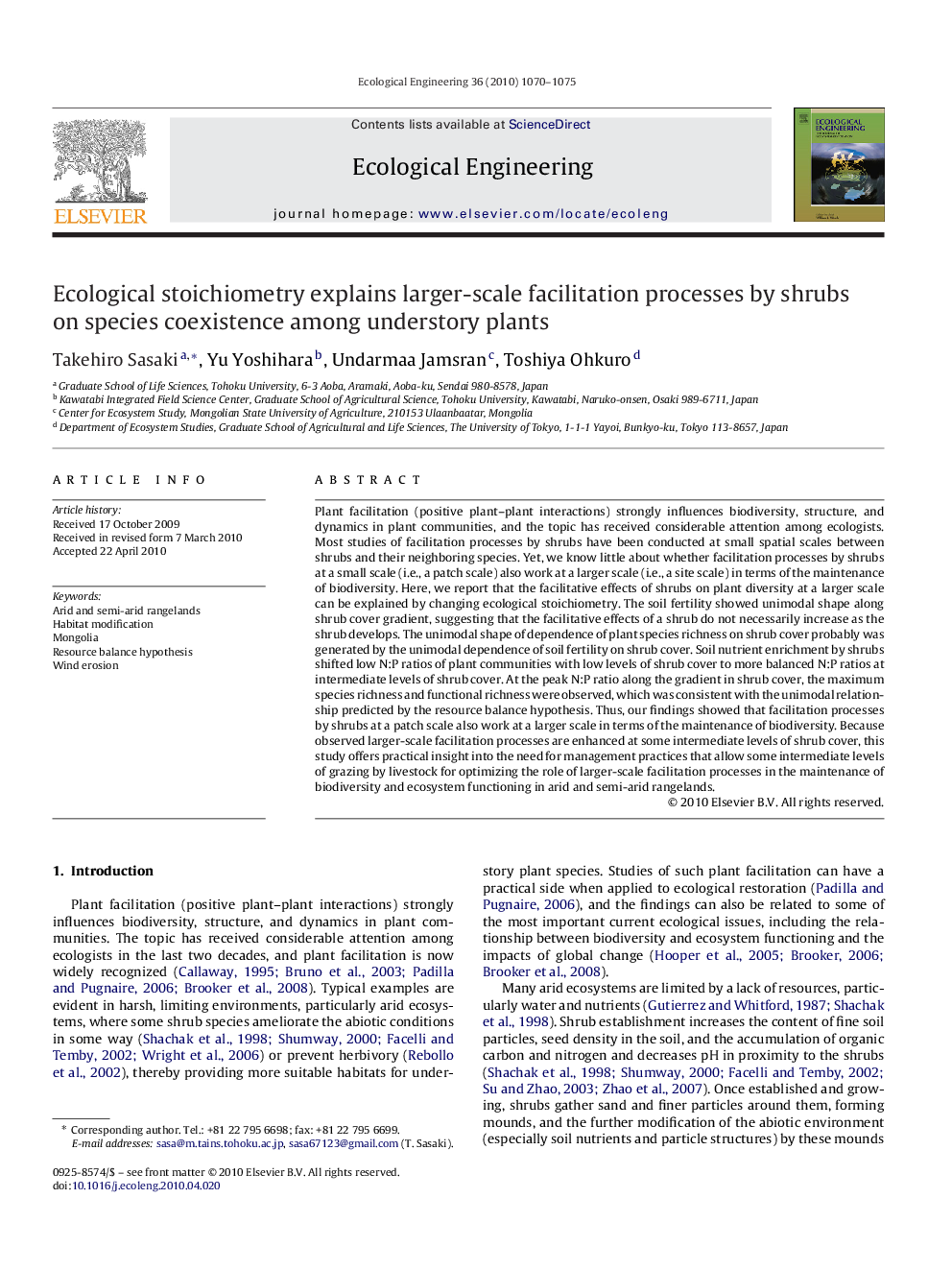| Article ID | Journal | Published Year | Pages | File Type |
|---|---|---|---|---|
| 4390363 | Ecological Engineering | 2010 | 6 Pages |
Plant facilitation (positive plant–plant interactions) strongly influences biodiversity, structure, and dynamics in plant communities, and the topic has received considerable attention among ecologists. Most studies of facilitation processes by shrubs have been conducted at small spatial scales between shrubs and their neighboring species. Yet, we know little about whether facilitation processes by shrubs at a small scale (i.e., a patch scale) also work at a larger scale (i.e., a site scale) in terms of the maintenance of biodiversity. Here, we report that the facilitative effects of shrubs on plant diversity at a larger scale can be explained by changing ecological stoichiometry. The soil fertility showed unimodal shape along shrub cover gradient, suggesting that the facilitative effects of a shrub do not necessarily increase as the shrub develops. The unimodal shape of dependence of plant species richness on shrub cover probably was generated by the unimodal dependence of soil fertility on shrub cover. Soil nutrient enrichment by shrubs shifted low N:P ratios of plant communities with low levels of shrub cover to more balanced N:P ratios at intermediate levels of shrub cover. At the peak N:P ratio along the gradient in shrub cover, the maximum species richness and functional richness were observed, which was consistent with the unimodal relationship predicted by the resource balance hypothesis. Thus, our findings showed that facilitation processes by shrubs at a patch scale also work at a larger scale in terms of the maintenance of biodiversity. Because observed larger-scale facilitation processes are enhanced at some intermediate levels of shrub cover, this study offers practical insight into the need for management practices that allow some intermediate levels of grazing by livestock for optimizing the role of larger-scale facilitation processes in the maintenance of biodiversity and ecosystem functioning in arid and semi-arid rangelands.
